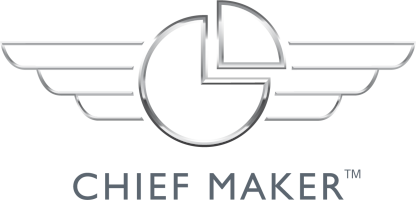
Subscribe to Spotify![]()
Our High Performance teams series now enters part 19 and we enter part 4 of our pillar on Tools. So far we’ve covered Scoreboards and Metrics, Hardware and Systems and Processes.
In this episode, I outline:
- How all HP Teams have a secret recipe for success which drives authority, clarity and unrivalled results
- How to develop that secret recipe by starting with employee/customer or business needs
- How you can overcome some resistance from the people in your team or stakeholders with diagnostics and health checks;
- How this can accelerate your career and ability to lead new teams
What are frameworks?
I'll start off with a great quote from Michael Dell, the Founder of Dell Computers:
“You don’t need to be a genius or a visionary, or even a college graduate for that matter, to be successful. You just need a framework and a dream.”
When I say “frameworks” what I mean is your Intellectual Property (IP) of your team, of yourself; they create your own secret recipe for success and they create clarity in complex, fast-moving environments.
For example, a PESTEL Analysis or a SWOT analysis, or Waterfall and Scrum are frameworks, as are the 9 block sales method and 8 block individual analysis method. The GREAT Method (Game Plan, Routines, Entourage, Assets, Track Record) from my book, The Chief Maker, is a framework for career acceleration, and this series, The High Performance Teams is a framework.
There's one thing for certain in business: IP and frameworks increase the value of the business and more importantly, they increase your value to a business. In other words, when you bring frameworks and IP to a new organisation you work for, you are increasing your value in the market. A perfect example of this is that whenever any consultant turns up in your organisation to sell you something, they'll always have a framework which accelerates progression, gives you information as to where you could be going wrong.
Frameworks drive authority because if you have one that has all the right component parts, it will help make everybody sing from the same song sheet. It's measurable, it creates clarity and confidence and it means when you're making decisions, it's done based on some science that you've actually worked to create.
Why are frameworks important?
If you want to create and lead a high performance team, you've got to create your own internal framework for doing so. So, what do the highest-performing or highest-grossing consultants on the planet do?
If you provide an internal service, which might be recruitment for other people in the business, you should have a recruitment framework. If you're in marketing, you'll have a marketing framework. That's your own framework that you've developed – it's one that fits for your industry, profession and business, and will have a stage of maturity as frameworks do evolve over time.
Frameworks are there to make clear decisions. When things get complex and difficult, or there's a debate about the angle to take, this is where you can use a framework, and I'll give you a perfect example. At one point, I was coaching an executive team of a mining company and this mining company were great leaders, but there was a raging debate about whether or not they should outsource one particular part of their business. So what did we do?
Well, we had a framework that we created as an executive team. I led them through creating the full value chain of their business from where they do mine exploration, all the way through to selling their assets in the market. What they were able to do by using that framework was build a very clear understanding of where in the value chain they were going to be experts and what work they would keep in-house.
Therefore, it became clear where it would be acceptable to outsource based on the way they operated in the kind of industry they were in.
The debate just left the room and the executives could see by using the framework that they were on the right path by outsourcing this particular part of the business.
How do frameworks work in practice?
Let's go through a worked example.
Assume you are running a manufacturing plant or a mine site and you decide that you're going to create a mine optimization framework. What you actually want to create is the very best scoreboard metric system in the industry – let's call it the Great Mining Scoreboard. So, after a bit of brainstorming, you decide that your framework needs to include four parts: data collection, data analysis, data presentation and culture change.
Now, let's just say you were in charge of business performance of this mine. Once you had mapped out the framework and its component parts and how they relate to one another in terms of workflows, you could then go to the different parts of the business that were the custodians of the four areas and declare that this was how they can measure success on each of those four elements and how they could improve maturity along the journey. It also talks about how you can go from point A to point B, clearly.
The great thing about a framework is that the business units will really begin to believe in you because you've got clarity in how they can achieve their own objectives, which in turn will achieve the ultimate goal – the best scoreboard metric system in the industry. They will also believe that you know what you're talking about and you've got something that makes sense to everybody. It all of a sudden makes a complex topic that a lot of people know very little about, very, very clear.
There is nothing more effective than a leader who can stand up and say, “This is the framework we are going to follow and this is what we can achieve.”
How frameworks fit into the HPT Model
Our High Performance Teams Model is like a journey; we've been speaking about all the elements thus far and we're building up the right team, with the right strategy and vision, and the right tools. But so far, it hasn't actually told you how to go from being low-performing to high-performing. So your framework also needs to include a journey map that says you go through four clear stages of high performance teams:
Fix –> Reset –> Grow –> Change the game
What you want to do is create the framework and then create something like a maturity model that will allow you to calculate where you are at in the journey of using this framework for performance. Your people can then see that this complex thing now has four or five component parts and where you are on the journey to success.
Your team members will also have clarity, such that when they head off on their mission – whether that be selling, playing a game or servicing customers – they know exactly what the next move is because they understand the framework that they're using to make decisions. They also understand the journey that they're going on as far as maturity – they know that there is still work to be done on growth and changing the game and it eases the stress on them.
How to create your own framework
In order to create your own one, you need to work out what exactly is a core part of your team's job. This framework could be anything from a case management system, or a recruitment process, a financial health check, or a project management lifecycle.
Step 1: Build out the component parts
What would be the four- or five-step process or the six or seven elements of the framework that can cover all the bases in delivering a high-quality service or high-quality operation?
Step 2: Define the maturity model
What are the three, four or five maturity levels? If you were doing all elements of the framework poorly, what would be the consequences and the risk in the business? Where would it all be going wrong?
Step 3: Create the journey map
If you're right at the very beginning of maturity, then go through each of the component parts and create a really clear journey map of maturity, to help define how to go from low maturity to high maturity.
Step 4: Create a diagnostic
Use a tool like Survey Monkey, and ask a whole bunch of questions, either of the people within your team, people in other departments, external customers, etc. This will allow you to benchmark where they're up to and then make crystal clear decisions as to the next steps to improve performance.
Step 5: Design it professionally
Turn it into a really high-quality looking piece of work by getting a graphic designer to bring it all to life. Put together a presentation some cool infographics with some data to give it some credibility and then go and test it with some internal customers or with your own team.
Stay epic,
Greg
MINI-MBA PROGRAM
 12 week leadership development program
12 week leadership development program
Limited places available
Next intake starting soon!







